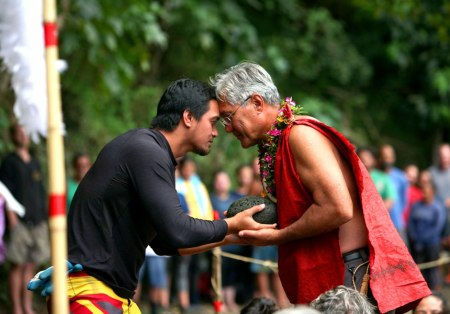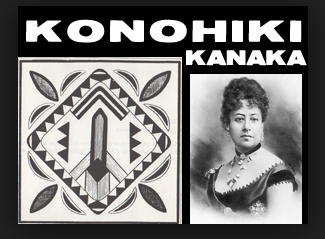Article: Cultivating a “konohiki” Mindset for the Future…
- Kevin Chang
- 17 de abr. de 2018
- 2 min de leitura

Cultivating a “konohiki” mindset for the future…
Aloha ʻāina momona!
Aia a kau ka i‘a i ka wa‘a, mana‘o ke ola.
One can think of life after the fish is in the canoe.
This ʻōlelo noʻeau (Hawaiian proverb) implies that big life dreams can be pursued only if the immediate needs to sustain life are secured.
This sentiment is at the root of KUA’s mission. To revive foundations that support ʻāina momona–healthy and abundant resources that contribute to community well-being and resilience–we must address the disconnections and frayed relationships with each other and the environment we live in.
In Hawaiʻi, there once existed a kind of leadership and tradition that wove these connections and built these relationships. The konohiki–the headman of an ahupuaʻa (land division)–was knowledgeable about environmental resources and wise enough to understand people too were of the environment.

One interpretation of “konohiki” is to invite willingness and ability. Willingness nurtured in community stewardship of place is an aspect of good citizenship. Konohiki who managed resources well, built harmonious relations in governance between officials, people, and place. Managing these relationships ensured fish could be brought into the canoe, and life contemplated and celebrated.
Our participation in the 2016 World Conservation Congress, blessed KUA with new opportunities to build bridges internationally. We’ve carried the story of the networks of E Alu Pū, Hui Mālama Loko I‘a, and the Limu Hui to places like Guatemala, Tahiti, and Uganda.
On a recent trip to Delhi, India, for a conference on “heritage management,” I spoke about E Alu Pū, KUA’s founding network, in a keynote address. After a long technical lecture on new approaches to resource management, a Kenyan gentleman, Dr. George Abungu, elaborated on the deeper purpose of our work. He opened with a Mahatma Gandhi quote as a foundation for initiatives led by communities in Kenya. “Whatever you do for me but without me, you do against me.” He went on to say how E Alu Pū moved his heart and touched him at his core.
Like the world voyage of Hōkūleʻa, the collective work and spirit of our kuaʻāina (grassroots) communities continues to resonate with local and indigenous community-based natural resource management initiatives and thought leaders around the world.
As a tumultuous year closes, an emerging story of hope can be found in these communities, across generations of common people, and citizens who seek to develop a konohiki mindset and step into their kuleana (responsibility) to mālama (care for) our places through preparation of our local soils for the fertile dreams and immediate needs of future generations.
This coming year let us look beyond individual titles and conventional examples of leadership. Let us explore the roles, function, and importance of “konohiki” in our lives, seek opportunities to give back, to lift up each other, and to tell the stories of how our island people work together to be the solution our world needs to mālama honua (care for our planet).
Photo credit: Jeff Alexander
I mua, i mua, e nā hoa, a e pūpūkahi i loaʻa ai ka holomua a me ka pōmaikaʻi,
Kevin Chang,
Executive Director, KUA
Photo credit: Kai Markell








































Comentários